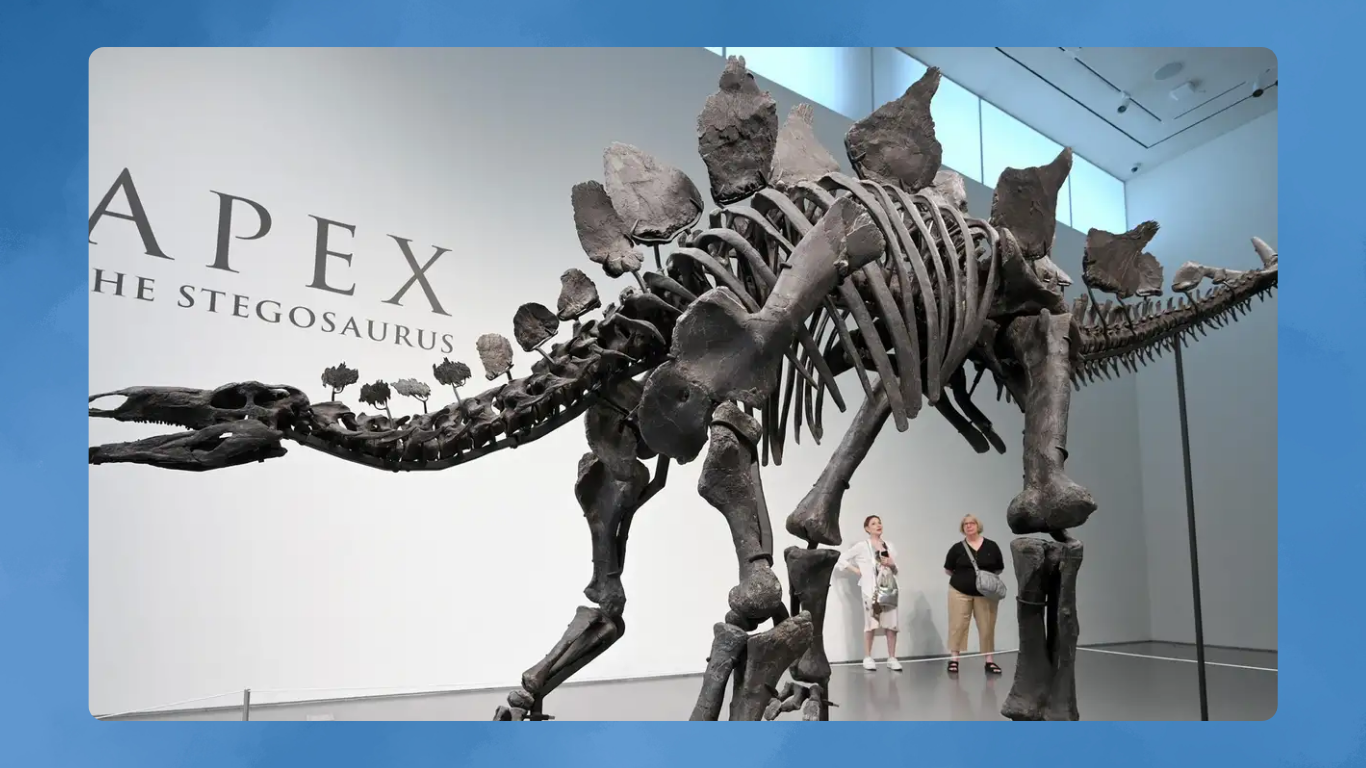The most complete Stegosaurus fossil ever found, named “Apex,” has been sold for a record-breaking $44.6 million at Sotheby’s in New York, becoming the most valuable fossil ever auctioned.

Discovered in 2022 on private land in Moffat County, Colorado, near the town of Dinosaur, by commercial paleontologist Jason Cooper, “Apex” measures an impressive 3.4 meters (11 feet) tall and 8.2 meters (27 feet) long. This makes it over 30% larger than “Sophie,” the previously most intact Stegosaurus specimen displayed at London’s Natural History Museum.
The fossil, featuring 254 of an estimated 319 bone elements, belonged to a large, robust adult Stegosaurus. Evidence of rheumatoid arthritis indicates that it lived to an advanced age, adding to its significance. Remarkably preserved in hard sandstone, the bones show no signs of combat-related injuries or postmortem scavenging.

An anonymous buyer purchased “Apex” with plans to loan it to a U.S. institution, ensuring the fossil remains accessible for public viewing and scientific research. After the sale, the buyer stated, “Apex was born in America and is going to stay in America!”
Cassandra Hatton, Sotheby’s Global Head of Science and Popular Culture, shared her excitement: “‘Apex’ truly lived up to its name today, inspiring bidders globally and setting a new record. We’ve worked closely with Jason Cooper from the moment of its discovery to this historic sale. It’s thrilling that such a significant specimen has now secured its place in history, 150 million years after it roamed the Earth.”
The Sotheby’s natural history auction, which also featured meteorites, minerals, gogottes, and Paleolithic tools for the first time, achieved a total of $45.8 million (£35.2 million), the highest ever for a natural history auction.
This event highlighted other significant discoveries, including a new plant-eating dinosaur species on the Isle of Wight and a dinosaur with blade-like nasal horns found in Montana, emphasizing the ongoing importance of paleontological research.

Subtly charming pop culture geek. Amateur analyst. Freelance tv buff. Coffee lover
